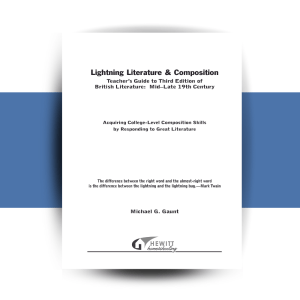Description
Naguib Mahfouz was born in Cairo in 1911 and began writing when he was seventeen. His first novel was published in 1939 and ten more were written before the Egyptian Revolution of July 1952, when he stopped writing for several years. . . . Until 1972, Mahfouz was employed as a civil servant, and, finally, as consultant on Cultural Affairs to the Ministry of Culture. . . . He is now the author of no fewer than thirty novels, more than a hundred short stories, and more than two hundred articles. Half of his novels have been made into films which have circulated throughout the Arabic-speaking world. In Egypt, each new publication is regarded as a major cultural event and his name is inevitably among the first mentioned in any literary discussion from Gibraltar to the Gulf (Nobelprize.org website). He was awarded the Nobel Prize in Literature in 1988.
This is part of Hewitt’s Lightning Literature & Composition curriculum. From our Guide by Brenda S. Cox:
Fountain and Tomb is called Hikaayaat Haretna in Arabic, which means ?Tales of Our Quarter.? Each of the seventy-eight chapters in this short novel is a story in itself. Some are obviously connected to previous stories, others are not. Each is a slice of life in a small Cairo neighborhood, which stretches from the Great Square (connecting the neighborhood with the rest of Cairo and Egypt), through an alley with a fountain, past the Sufi Muslim monastery (called the takiya), with its own garden and stream, and ending at the cemetery and the city wall. Mahfouz grew up in a similar neighborhood in the 1920s, and he sets his stories during that turbulent time. In the alley you will meet lovers and gangsters, revolutionaries and soldiers, madmen and thieves, holy men and murderers, kindness and cruelty, tragedy and joy. Some stories are mysterious and unresolved, perhaps as in real life where many things happen that we never really understand. Some stories have a spiritual message, others are very down-to-earth.






